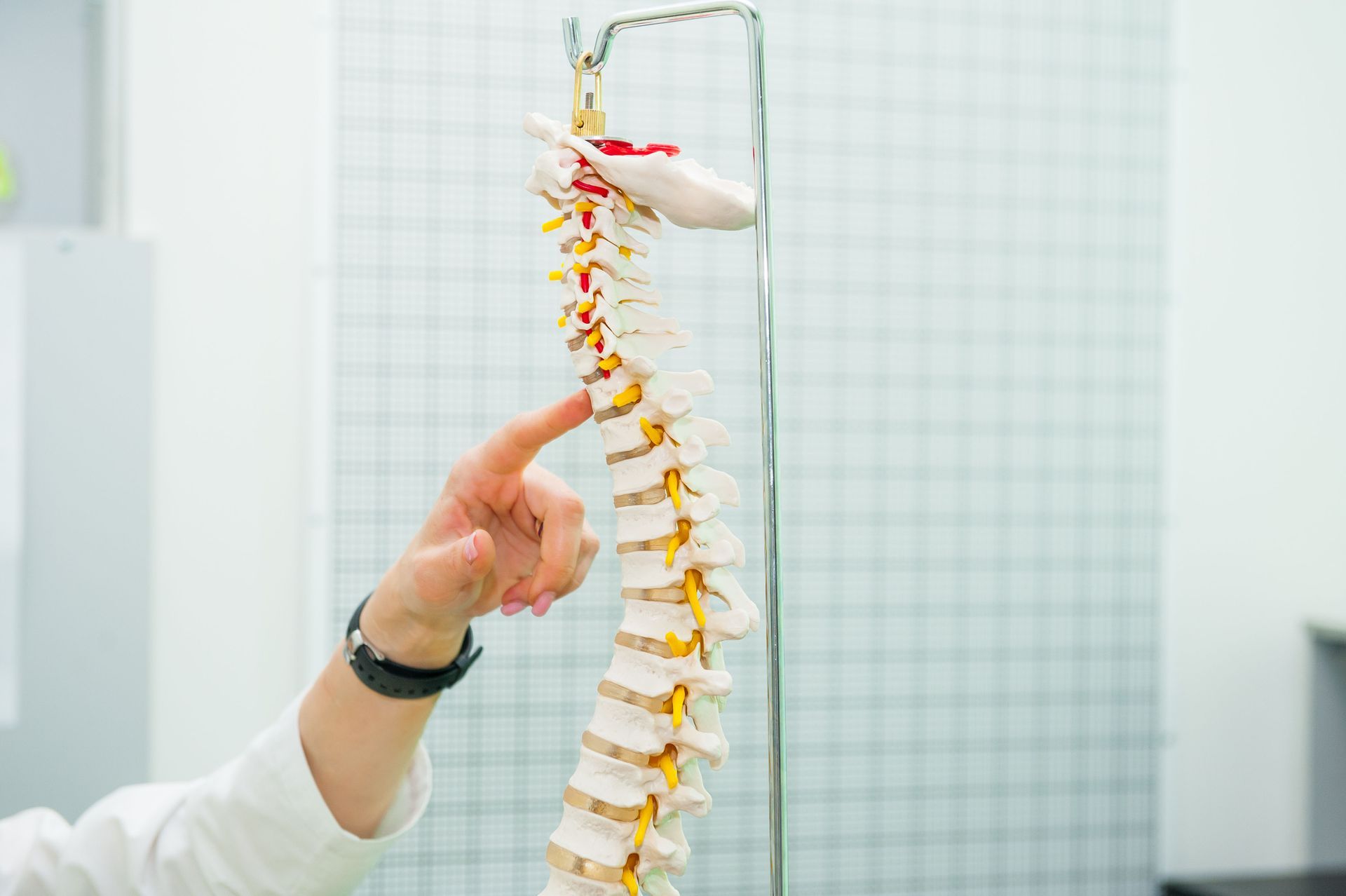How Your Daily Tech Habits Could Be Causing Back Pain
Explore how the daily use of technology — ranging from computers to mobile phones — can contribute to back pain, and why it's vital to address these issues for long-term health benefits. The constant integration of screens into our work, communication, and leisure activities makes it easy to overlook how these habits shape our posture and daily movements. Left unaddressed, these behaviors can lead to chronic musculoskeletal problems and hinder overall well-being.
The Impact of Screen Time on Posture
The increasing dependence on digital devices has led to an unprecedented rise in screen time among individuals worldwide. This growing screen-time habit has not only altered how we consume information but also how we hold our bodies. As we engage more with our screens, it's imperative to acknowledge how these prolonged periods of screen time can contribute to poor posture.
Screen time and posture deterioration are intricately linked. When individuals become engrossed in their screens, they often overlook their posture, leading to slouching or hunching habits. The muscles in the neck, back, and shoulders endure additional strain, which over time can lead to discomfort or chronic pain. It is essential for individuals to recognize the associated risks to mitigate these unfavorable outcomes.
Common postural issues induced by tech usage include forward head posture, rounded shoulders, and an anterior pelvic tilt. The immediate comfort derived from these positions masks the potential long-term damage they can cause. Recognizing these postural patterns fosters self-awareness, encouraging corrective actions. Addressing these issues proactively promotes a healthier relationship with technology. Even setting simple reminders to sit upright or perform posture checks during breaks can make a noticeable difference over time. Small behavioral changes can accumulate into lasting physical relief and better posture habits.
Ergonomics and Office Work
Ergonomics is the science of designing and arranging workplace elements for optimal human use. Proper ergonomic practices in office settings can significantly reduce the risk of discomfort and back pain. Understanding ergonomics is crucial because it aligns work environments with individual needs, enhancing both comfort and productivity.
In many office settings, ergonomic mistakes are prevalent, often due to lack of awareness. Common errors include desks set at improper heights, non-supportive chairs, and poorly placed monitors. These misconfigurations force individuals into awkward postures, exacerbating strain on their musculoskeletal systems. It is essential to address these mistakes promptly.
An ergonomic workspace is a cornerstone of a healthy office environment. Using a chair with adjustable support, positioning monitors at eye level, and maintaining a neutral wrist position when typing are foundational ergonomic principles. Additionally, accessories such as footrests and lumbar supports can enhance ergonomics significantly.
Investing in these resources yields long-term benefits by reducing back pain. Companies that prioritize ergonomic design often see improvements in employee satisfaction and reduced absenteeism, further proving that investing in ergonomics is both a health and productivity measure.
Mobile Phone Usage and Back Strain
The ubiquitous presence of mobile devices has introduced the "text neck" phenomenon. This condition refers to the strain induced on the upper back and neck due to prolonged downward tilting of the head towards screens. Over time, this positioning can result in significant discomfort and pain, or even contribute to deteriorating back health.
Mobile devices may contribute to upper back strain, as they are often used in non-ergonomic positions. Users frequently hold phones low, leading to poor upper body posture. This consistent strain on the neck and shoulders can trigger headaches, tension, and chronic pain. It’s vital to be conscious of this problem and adjust usage habits accordingly.
To reduce mobile-induced back strain, users are encouraged to hold their devices at eye level. Taking regular breaks to move and stretch, and using hands-free options whenever possible can also help alleviate this strain. Innovative gadgets, such as phone stands and ergonomic cases, can support healthier usage practices, helping users avoid unnecessary discomfort. These changes not only help prevent pain but also improve energy levels and concentration, especially for those who rely on mobile devices for extended periods each day.
Laptop Use and Its Contribution to Discomfort
Laptop use presents unique challenges compared to desktops, primarily due to its compact design. Users tend to lean forward to view the screen, or hunch over a desk, which promotes poor posture. This forward bending or slouched stance can put significant pressure on the back and neck over time, contributing to discomfort.
Common ergonomic mistakes with laptops involve their placement and the user's posture. Many individuals use laptops while sitting on beds, couches, or low surfaces, leading to slumped postures. This not only strains the back but also results in misaligned wrists and uncomfortable neck positions. Recognizing these mistakes is vital for mitigating laptop-related discomfort.
Improving laptop ergonomics requires intentional changes in how and where they're used. Elevating the laptop to eye level with stands, using external keyboards and mice, and maintaining a neutral wrist position are practical solutions. Scheduled breaks for stretching can further reduce the risks associated with prolonged laptop use, reinforcing healthier habits. These ergonomic changes help transform technology from a source of discomfort into a tool for productivity and wellness.
Sedentary Behavior and Its Impacts
There is a strong connection between technology use and increasingly sedentary lifestyles. The conveniences of digital devices have led to more sitting and less movement, exacerbating sedentary behavior. This lack of physical activity is a leading contributor to musculoskeletal problems, including back pain.
Prolonged sitting, especially with poor posture, can result in significant health consequences. It affects muscle and joint health, restricts circulation, and can lead to obesity and heart-related conditions. Combating sedentary habits is crucial to maintaining both physical and mental health.
Incorporating movement into daily routines is essential for counteracting the hazards of sitting. Standing desks offer an effective alternative, enabling users to alternate between sitting and standing throughout the day. According to Yellow Bus Aba, chiropractic care is often rated highly for treating low-back pain, with 77% of patients describing their care as "very effective". Regularly integrating physical activity—like walking meetings or quick desk-side stretches—can amplify the benefits of ergonomic improvements, helping to restore mobility and reduce chronic pain.
Preventive Measures and Wellness Practices
Understanding and identifying early signs of technology-related back pain is the first step toward prevention. Symptoms like consistent discomfort, stiffness, or tingling can indicate emerging back issues. Early recognition allows individuals to address these symptoms before they progress into chronic pain.
Effective exercises can counteract tech-induced back pain, focusing on stretching and strengthening core muscles. Routines incorporating yoga, pilates, and resistance training can improve posture and flexibility. Professional guidance can provide tailored exercise plans, further reducing the risk of back pain.
Mental wellness is an integral part of managing and preventing back pain. Practices like mindfulness and stress management can mitigate the psychosomatic effects of pain. Cultivating a balanced relationship with technology, including setting boundaries for tech use, supports not just physical but mental well-being. A holistic approach ensures long-term health and wellness. Encouraging screen-free time during evenings, especially before bed, can also improve sleep quality and allow the body to physically reset from daily tech-related strain.
While technology is here to stay, mindful usage, proper ergonomics, and active wellness habits can collectively reshape how we engage with our devices—and protect our spines in the process. If you've been suffering with back pain, it's time to call Pavia Chiropractic Services. We can help.







Share On: